Are you tired of fighting weeds and struggling with poor soil quality in your garden? If so, it might be time to consider raised bed gardening. By elevating your plants off the ground and filling the beds with high-quality soil, you can enjoy a range of benefits that make gardening easier, more productive, and more enjoyable than ever before.
In this post, we’ll explore some of the key advantages of raised bed gardening and how you can get started with this popular gardening technique today.
From improved drainage to better pest control, raised beds are a game-changer for any home gardener. So let’s dive in and discover why raised bed gardening might be the perfect solution for your backyard!
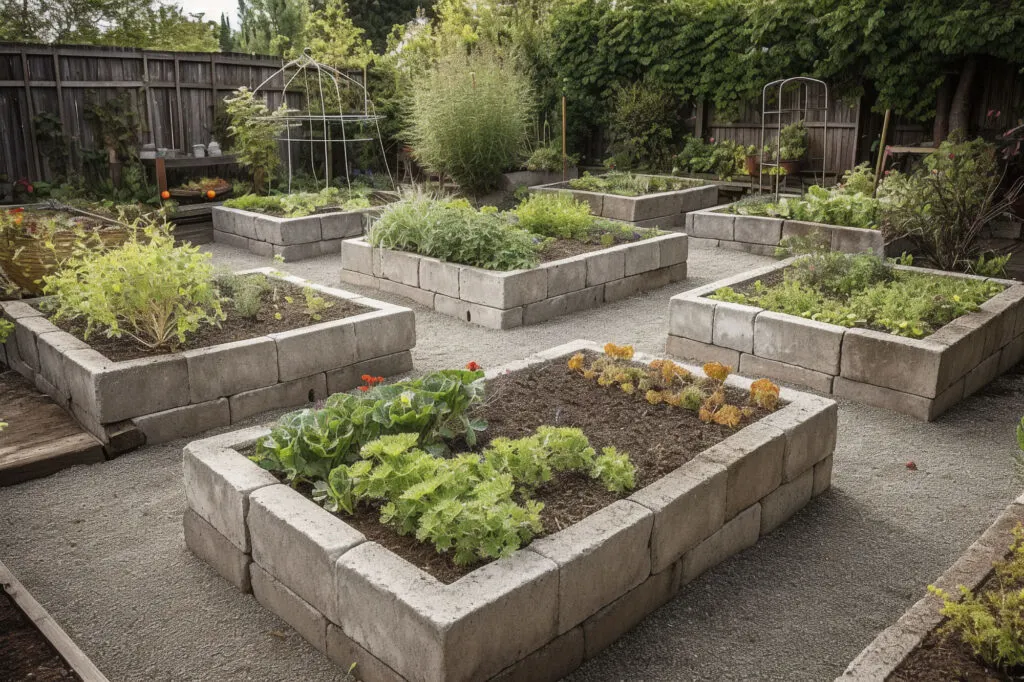
What is raised bed gardening?
Raised bed gardening is a method of growing plants in elevated garden beds filled with soil, compost, and other organic matter. These beds are typically constructed using wood, stone, or other materials and can be customized to fit any space or gardening need, as well as just about any budget.
If you have money to splurge, you can purchase beautiful prefabricated beds or hire someone to build them out of top-quality materials. On the other hand, if you want to build garden beds as cheaply as possible, there are endless options using recycled or inexpensive materials you might already have sitting around your property. You really can build raised garden beds out of almost anything.
Raised beds can be just a few inches high or several feet high. They give gardens a nice, organized look and make growing easier and more productive. The benefits listed below result in higher yields and easier maintenance for gardening in most situations.

Benefits of growing in a raised garden bed
Raised garden beds look appealing, for sure, but there are more benefits than just aesthetics. They are practical, convenient, and functional. Here are a few great reasons to try raised bed gardening:
1. Easier access
Raised bed gardening provides a great solution for individuals with physical limitations. For gardeners with back or knee problems, caring for plants in a raised bed alleviates the pains associated with bending over or kneeling on the ground for extended periods.
Gardeners with limited mobility can enjoy their hobby thanks to beds raised to suitable heights. A bed can be built tall enough to bring the soil level within easy reach for a gardener who needs to sit in a chair, a wheelchair, or other mobility device.
Raised bed gardening is a great way to make plant care more efficient, as the elevated beds allow easy access to the garden without stretching too far or crouching down as much. Plants can usually be reached from any side of most garden beds, simplifying weeding, watering, and harvesting.
Attractive paths can be made between beds for quick access and to reduce weeds in the growing area.
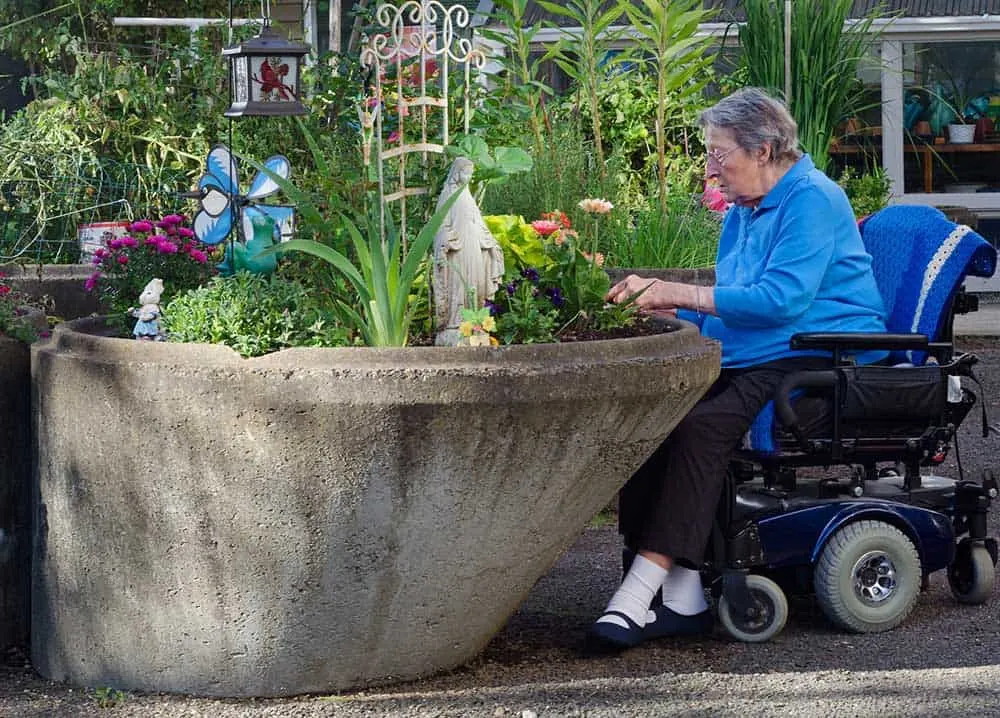
2. No tilling needed
In raised beds, the soil is amended by building it up every year with organic matter rather than tilling it down. The no-till method is better for the soil, as it keeps essential microorganisms intact. This biodiversity is very important to plant health. Healthy soil = healthy plants!
I have kept several raised beds in production for many years now and have never tilled them. In the fall I simply “chop and drop” that season’s spent plants from the garden, layer compost on top, and let the beds sit over winter. In early spring I’ll lightly rake the soil surface of the beds before planting if they need it. But for the most part, layering up leaves the soil rich, dark, and full of beneficial bugs.
3. Create functional, appealing spaces
Beds can easily be separated into different planting zones on your property. For example, you can use some beds for decorative annuals and perennials and others for edibles.
Beds for shade-loving plants like leafy greens and peas can be placed in low-light parts of your property, while those you fill with sun-loving tomatoes and peppers can go in the parts of your yard with the most sun exposure.
Raised beds also make distinguishing between individual plots in shared spaces like community or school gardens easy.
If you have kids who want to get involved in gardening, try making each their own raised bed to grow whatever they want. This is a fun, easy way to introduce kids to growing their own food, decorative plants, or both! I still remember how exciting it was as a kid to pick out our own seeds and help raise and harvest our garden plants.
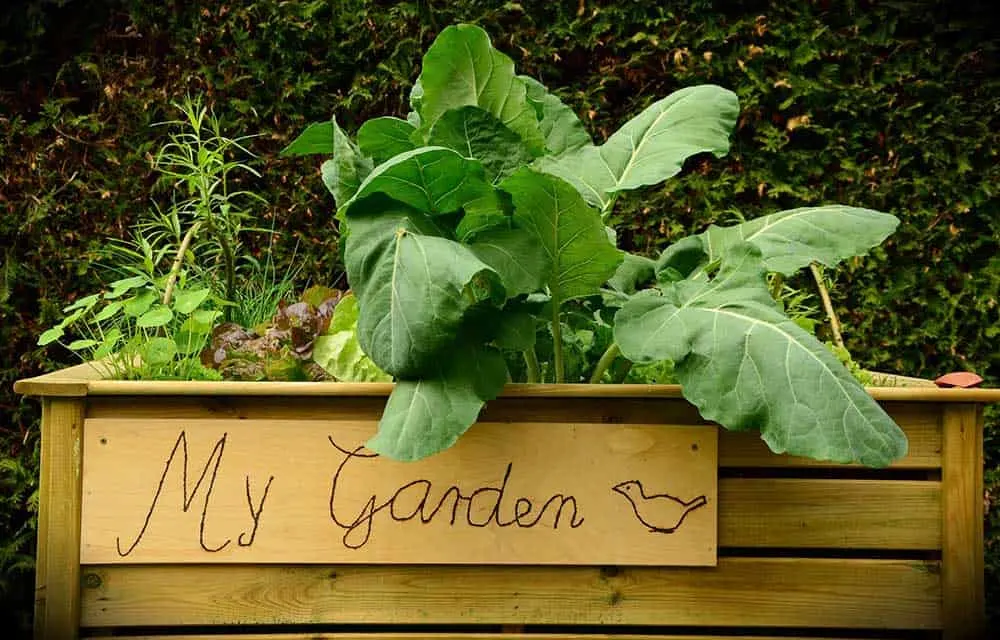
4. Protect plants from damage and soil compaction
When planting directly into the ground, you risk soil compaction from people and pets walking through your planting areas. This can damage plant roots and hinder growth.
In raised beds, plants are kept above ground level so the soil stays looser as plants are safe from most foot traffic and pets running through the garden. A tall enough bed will also keep out rabbits and other critters intent on making a snack of your hard work.

5. Better weed control
Weeds become less of a problem in well-maintained raised beds over time, especially when the beds are adequately mulched yearly.
Weed seeds will work their way into raised beds, but when they do, plucking them out is fast and easy if you catch them while they’re small. You don’t have to crawl around on your hands and knees to weed and the looser soil makes pulling weeds a breeze.

6. Better drainage
Since soil compaction is not an issue in raised beds, a properly-prepared bed has better soil drainage than its in-ground counterpart. Good drainage means even watering, happy roots, and happy plants. This is especially important in areas with heavy clay soil.
On the other hand, in areas with sandy soil where too much drainage is a problem, a raised bed with well-amended soil can aid in water retention.
With soil amendments, a garden bed can become the ideal place for plants regardless of the soil quality on your property.
7. Efficiency & productivity
Water, fertilizer, compost, mulch, and other soil amendments are easier to manage in raised beds than in garden areas planted in the ground and spread over large spaces. There is also less waste from runoff or from amending unnecessary areas.
Heavy rains can easily wash away wood chips, granular fertilizer, and other additions in in-ground gardens. Raised beds are more likely to help retain these materials.
Raised beds are also very productive. When you manage them properly, you can squeeze a lot of plants into a small space and they’ll thrive! The photo below is of one of my small raised beds. This was taken in early summer and the plants were loving life. By the end of each growing season, these beds are overflowing with produce.
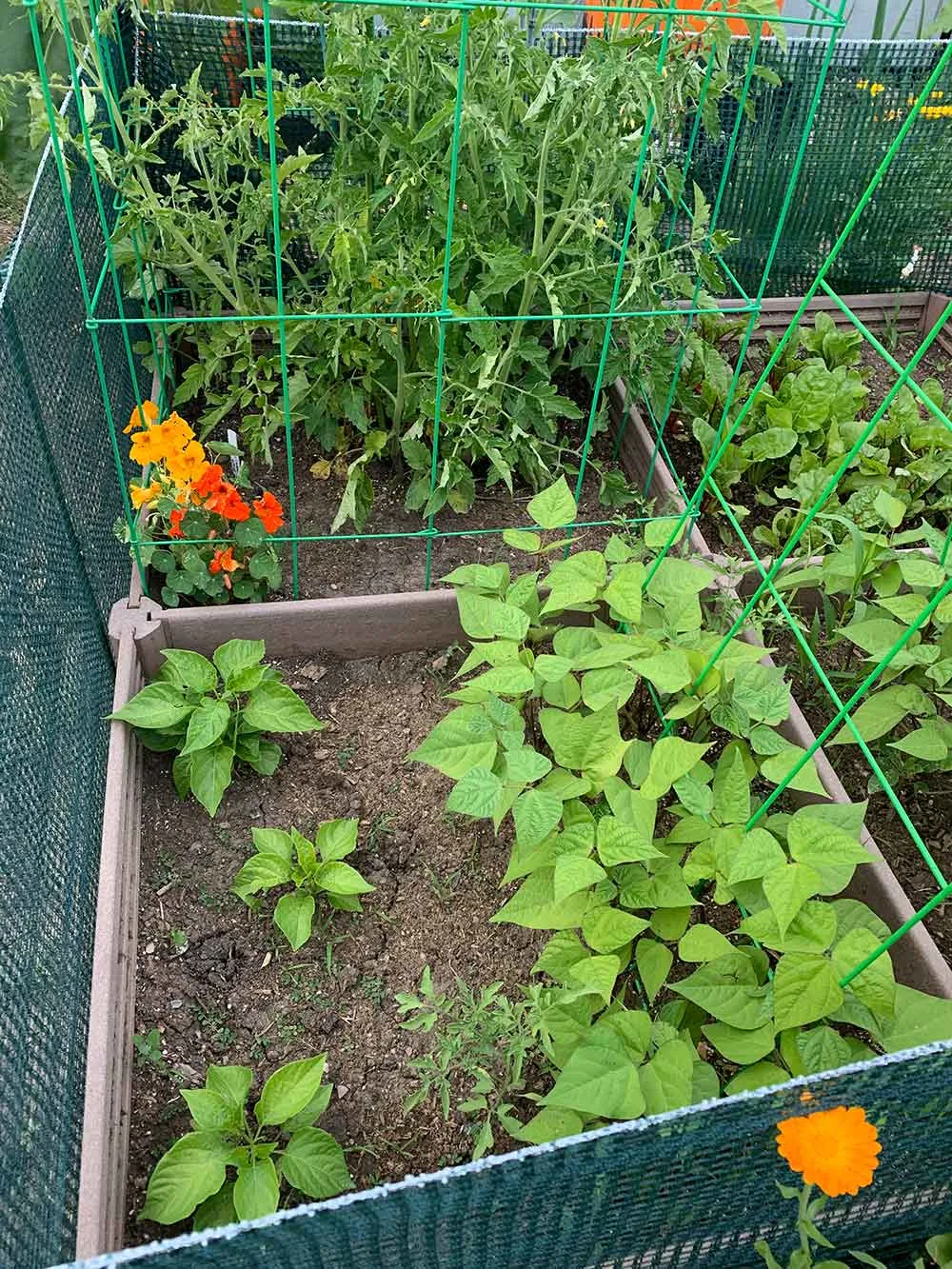
8. Longer growing season
The soil in raised beds warms earlier in the spring than the ground, so you can usually start the plants in your beds earlier than in-ground gardens. It’s still a good idea to check the soil temperature at night before planting to ensure it stays warm enough to sustain growth, but generally, raised beds can be planted sooner.
Covering plants in a raised bed garden is usually easier than in an in-ground garden. For those random frosty days in late fall and early spring, a row cover, blanket, tarp, hoop greenhouse, or a cold frame can be placed over your raised bed or even custom fit for quick application.
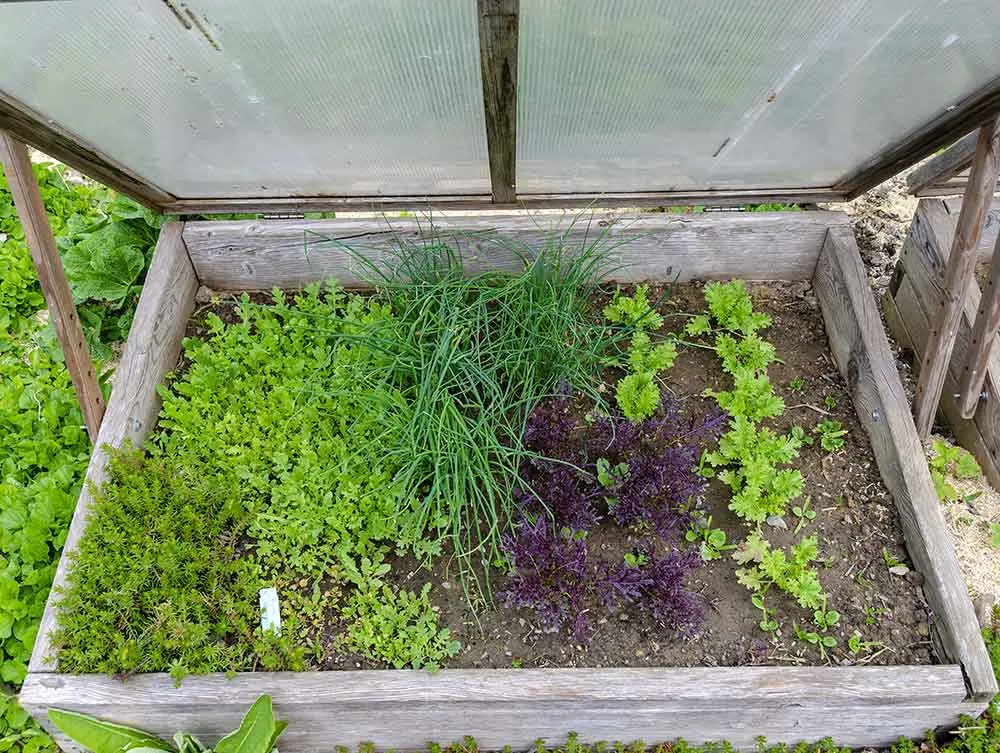
9. Greater planting versatility
From small boxes to large multi-bed layouts, raised beds provide plenty of garden space options for any yard size. If you are new to gardening or have a small space, you can start with one or two small beds. A small kitchen garden or herb garden is a great way for beginners to learn to garden.
As your gardening hobby (or obsession) grows, so can your planting beds. Raised beds can be built right over lawns or placed on patios and decks. You really can grow an herb or vegetable garden in almost any space.

10. Material and cost flexibility
No matter your budget, there are many options when building garden beds. Cheap materials such as used tires, pallets, and old timber make perfectly suitable growing spaces. You can even use cinder blocks to build growing beds.
At the other end of the cost spectrum, garden beds can be built out of more expensive wood, decorative concrete blocks, poured concrete, brick, or rock to match your house or landscape.
The variety of materials available makes it easy and fun to experiment with different types of beds to see what you like best and what works for your area.
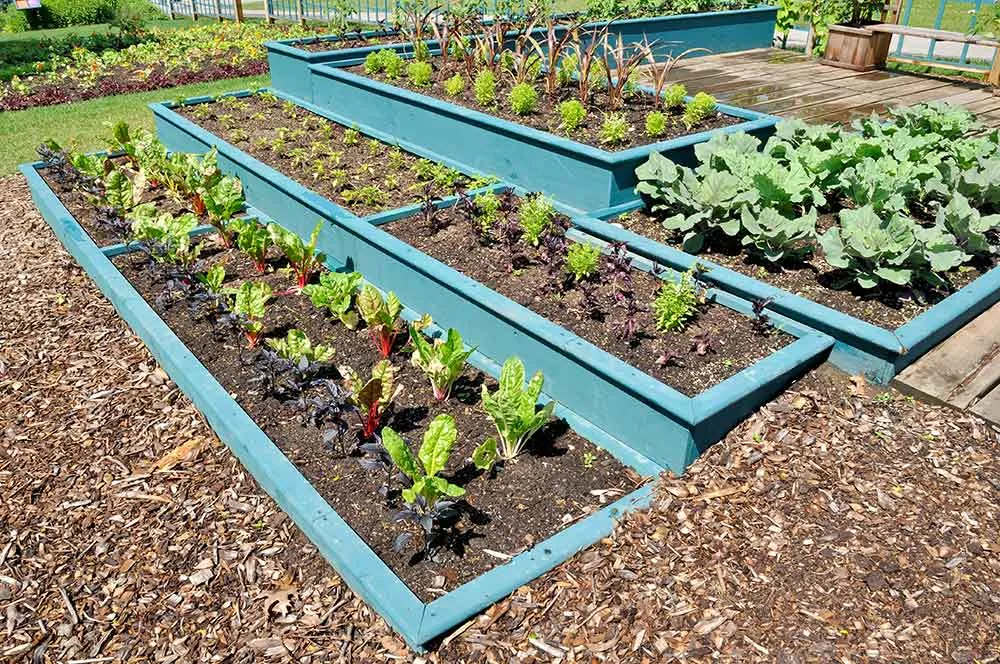
Tips for starting your own raised bed gardens:
- Once you decide which type of raised bed is right for you and get it set up in its location, add good quality garden soil and organic material like peat moss and aged compost to get a nice, loose, rich soil mixture. This is particularly important for new garden setups.
- For tall garden beds, you can save money on expensive soil by using cheaper topsoil at the bottom of the container or other materials that will break down over time. I have used materials like fallen branches I gather around my property and the previous year’s dried up garden plants that are difficult to compost (like thick sunflower stalks) to line the bottom of new raised beds. Over time these materials will break down underneath the soil in the raised bed, enriching the soil and feeding microorganisms.
- You can set up soaker hoses or drip irrigation in raised beds to make watering easier and more efficient.
- Crop rotation in raised beds benefits home gardeners because it helps prevent soil-borne diseases and pests. If you plant crops from the same family in the same bed year after year, pests and diseases particular to that family can take hold. For example, plants in the nightshade family (tomatoes, eggplants, peppers, etc) should be rotated with plants in other families, such as cucurbits (cucumber, squash, melons, etc). This helps ensure your soil stays healthy and only harbors beneficial bugs! Ornamentals, perennials, and herbs can usually stay in the same beds indefinitely.
- If you are using any type of container as a raised bed (as opposed to a bed sitting directly on the ground) you’ll want to make sure the container has drainage holes. The only thing plants hate more than being too dry is being chronically water-logged! In some containers, I have had to drill holes at the bottom of the container as well as the sides near the bottom to achieve proper drainage.
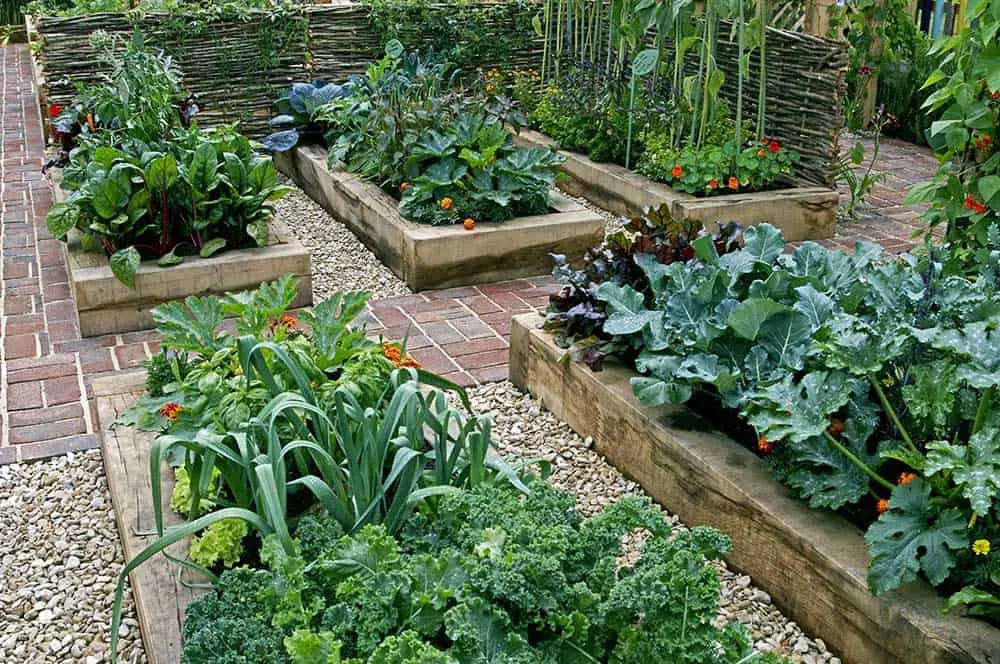
In conclusion, raised bed gardening is an excellent way to grow plants in a controlled environment. It offers several benefits, including improved soil quality, better drainage, and easier accessibility.
Raised beds also allow gardeners to plant more in a smaller space, making them perfect for those with limited yard space. In addition, raised bed gardening makes healthy eating more fun. What’s better than fresh produce you’ve grown yourself? With all these advantages, it’s no wonder that raised bed gardening has become increasingly popular among gardeners.
So, whether you’re a novice or an experienced gardener, consider giving raised bed gardening a try and enjoy its many perks.

